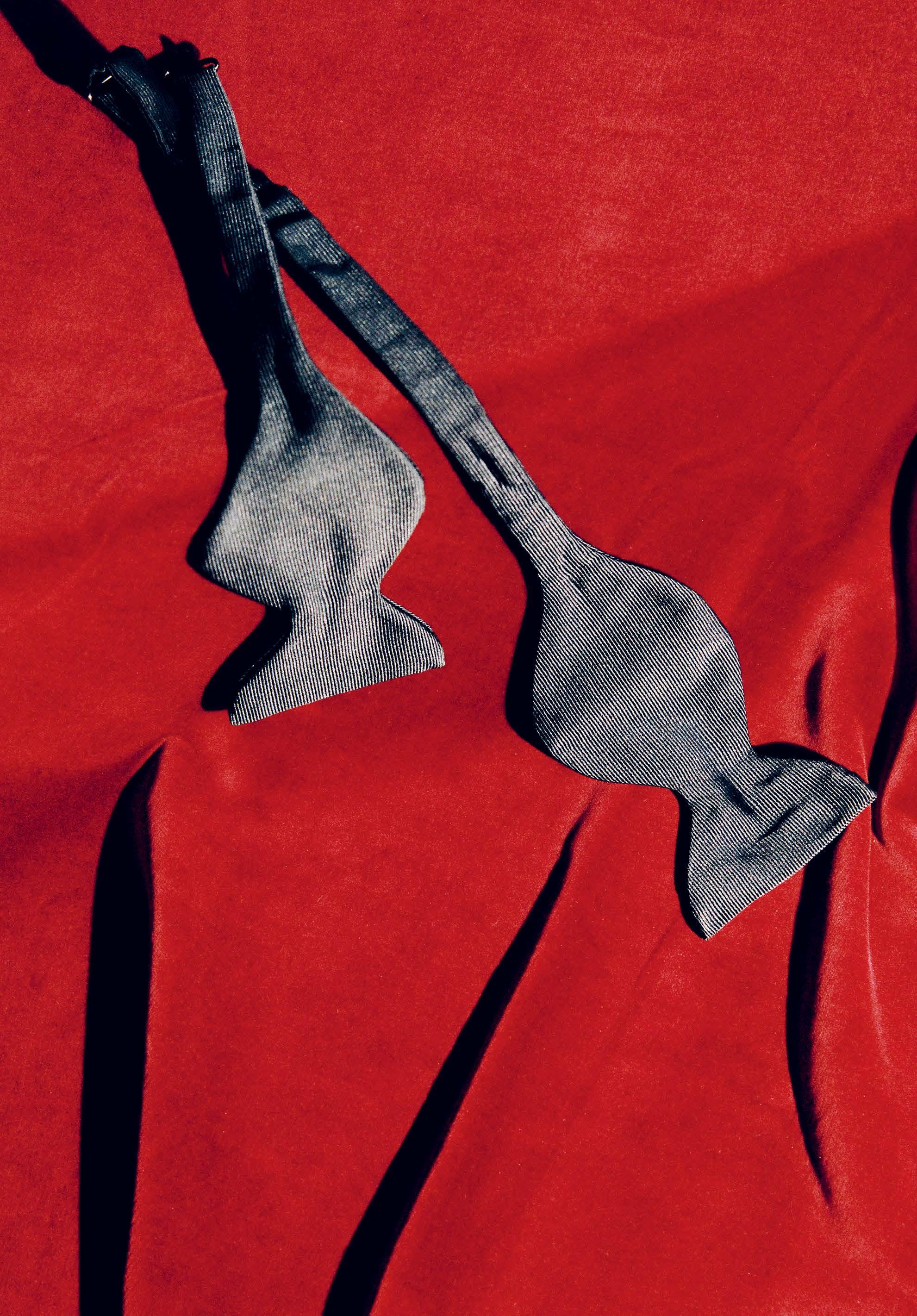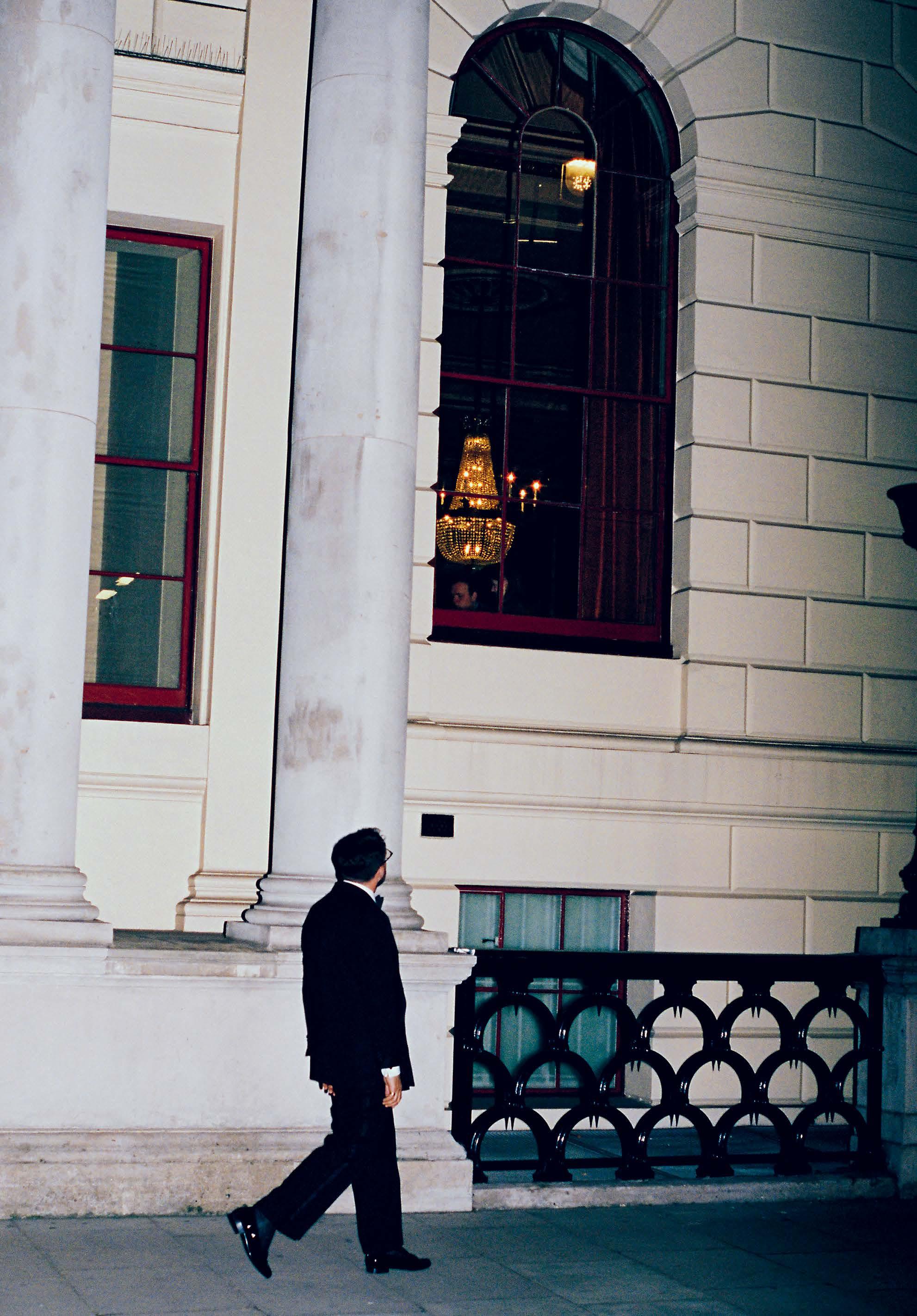
contents contents PROLOGUE: i. Foreword by Stephen Fr y 4 CHAPTER 1: Introduction 6 CHAPTER 2: The Three Pillars 12 2.1 Occasion 18 2.2 Audience 28 2.3 Location 38 CHAPTER 3: The Classics 48 3.1 Long live black tie! 50 3.2 Cloth 54 3.3 Single-breasted peak 58 3.4 Single-breasted shawl 62 3.5 Double-breasted peak 66 3.6 Double-breasted shawl 70 3.7 Classic trousers 72 3.8 Modernizing the classics 76 CHAPTER 4: Jackets 80 4.1 Alternative jackets 84 4.2 Lapels 100 4.3 Facings 106 4.4 St yling details 118 CHAPTER 5: Trousers 126 5.1 Alternative trousers 130 5.2 Trouser st yling 138 CHAPTER 6: Waistcoats & Cummerbunds 146 6.1 Waistcoats 150 6.2 Cummerbunds 154 CHAPTER 7: Shirts 156 7.1 Classic shirts 160 7.2 Alternative shirts 170 7.3 Buttons, cu inks, and studs 180 CHAPTER 8: Bow Ties 186 8.1 The immutable rules 188 8.2 Fixed-length or adjustable? 198 8.3 How to tie it 202 8.4 Di erent shapes 214 8.5 Fabrics & colours 232 CHAPTER 9: Shoes 236 CHAPTER 10: Accessories 250 10.1 Socks 252 10.2 Pocket squares 260 10.3 Braces 266 10.4 Watches & jeweller y 272 10.5 Eyewear 278 10.6 Shirt stays 282 10.7 Boutonnières 286 10.8 Outerwear 288 * Black Tie Brand Directory 294 2 3
Creative and modern takes on the black-tie outfit can and do shine in the right surroundings, but they will look totally out of place and even rather silly in more conservative ones. The golden rule to observe — pin it to the door of your wardrobe, tattoo it on your chest, or do whatever it takes to commit it to memory — is: when in doubt, remember that a classic dinner suit is appropriate at absolutely any black-tie event. If you simply must show o your brightly coloured, ladybird-shaped studs, bring them in your pocket and on arrival scan the scene; if you think the occasion allows it, swap your sober black enamel studs for the showstoppers in the WC.
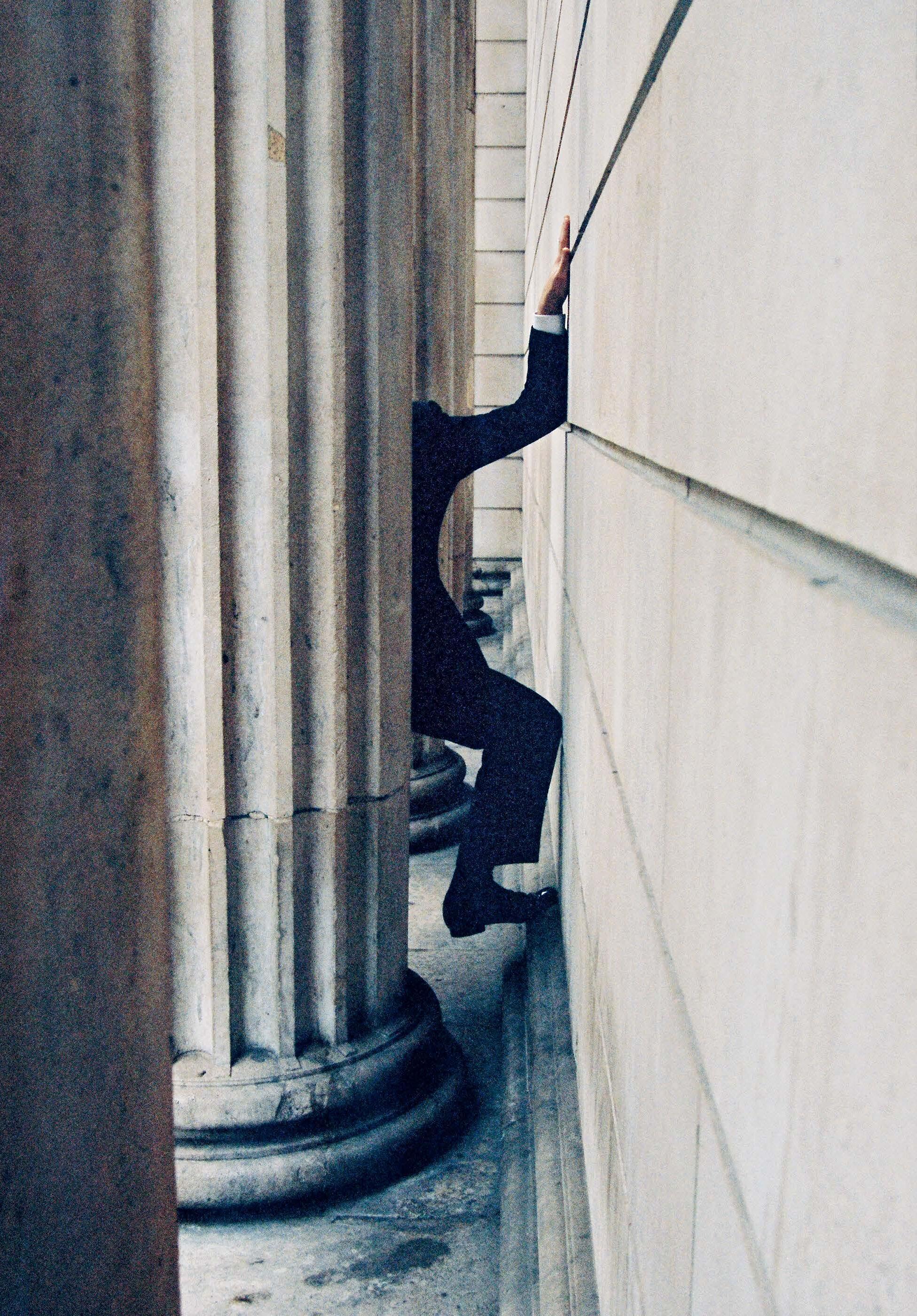
16 17 2 2
The silhouette of the classic dinner suit hasn’t really changed since the 1920s, a time when it was considered the standard evening attire, having largely replaced white tie, and when you see a perfectly executed classic black-tie get-up in all its magnificence, you’ll understand exactly why it’s remained unchanged and why a large body of supporters are fighting tooth and nail to ensure it remains so.
Here’s what it basically consists of: A black or midnight-blue suit with delicate silk lapels; trousers cut high and straight, falling with neither crease nor wrinkle; the two connected by a waistcoat or cummerbund; a crisp white shirt that provides the perfect canvas for a black bow tie; while the ensemble as a whole serves to channel the eyes to the face. Ever y detail is embellished to elongate the figure and thereby to convey height, a commanding presence, and a master y of oneself and one’s surroundings. The lapels are silk, instead of the traditional wool; the waist is covered so that neither shirt nor waistband peak out from under the buttoned jacket; and the seam of the trousers is hidden by a braid of silk. Behold, the ascent of man!
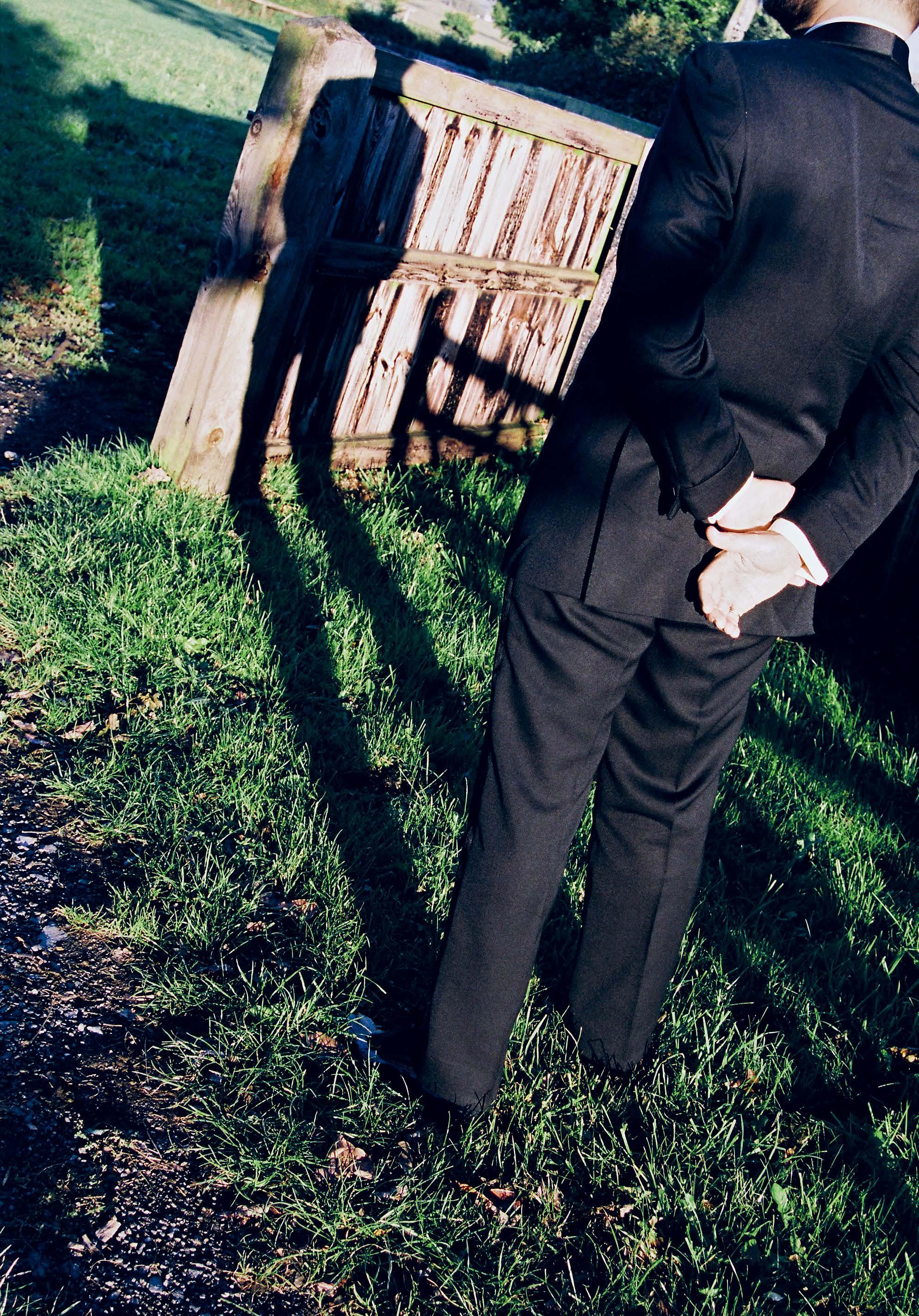
The classic dinner suit is the go-to choice if you’re ever in doubt concerning what to wear and will work for any black tie event. It doesn’t matter whether it’s single- or double-breasted — that’s something I leave entirely up to you — but it is advisable to always get decked out in a structured jacket with sharp lines. The resulting masculine silhouette alone is worth the cost of the suit.
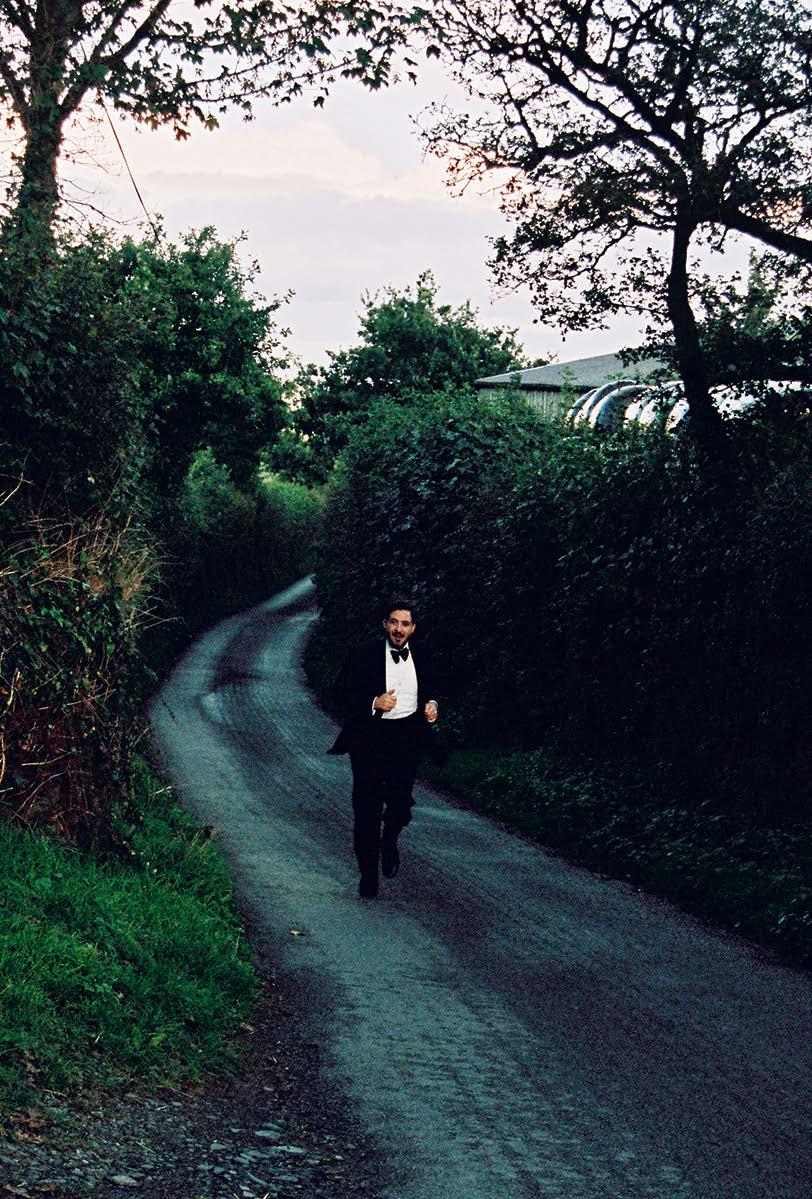
52 53 3.1 3.1
SINGLE-BREASTED PEAK
The original dinner jacket, the singlebreasted peak is a wonderfully striking number to don at an evening do. The key thing to remember is that because this is the most classic, unostentatious jacket, heralding as it does from an epoch when modest y was valued (which obliged men to wear black tie that was merely modestly show y!), you need to keep the st yling minimal. This means silk satin or grosgrain facings, a single-button closure, straight jetted pockets, and no buttonhole on the lapel unless you plan on wearing a boutonnière. The traditional version has no vents, but you may safely opt for either side vents or a single centre vent if comfort is one of your chief aims in life (count me as guilt y). The four buttons on the sleeve cu should be covered with a fabric that matches your lapels.
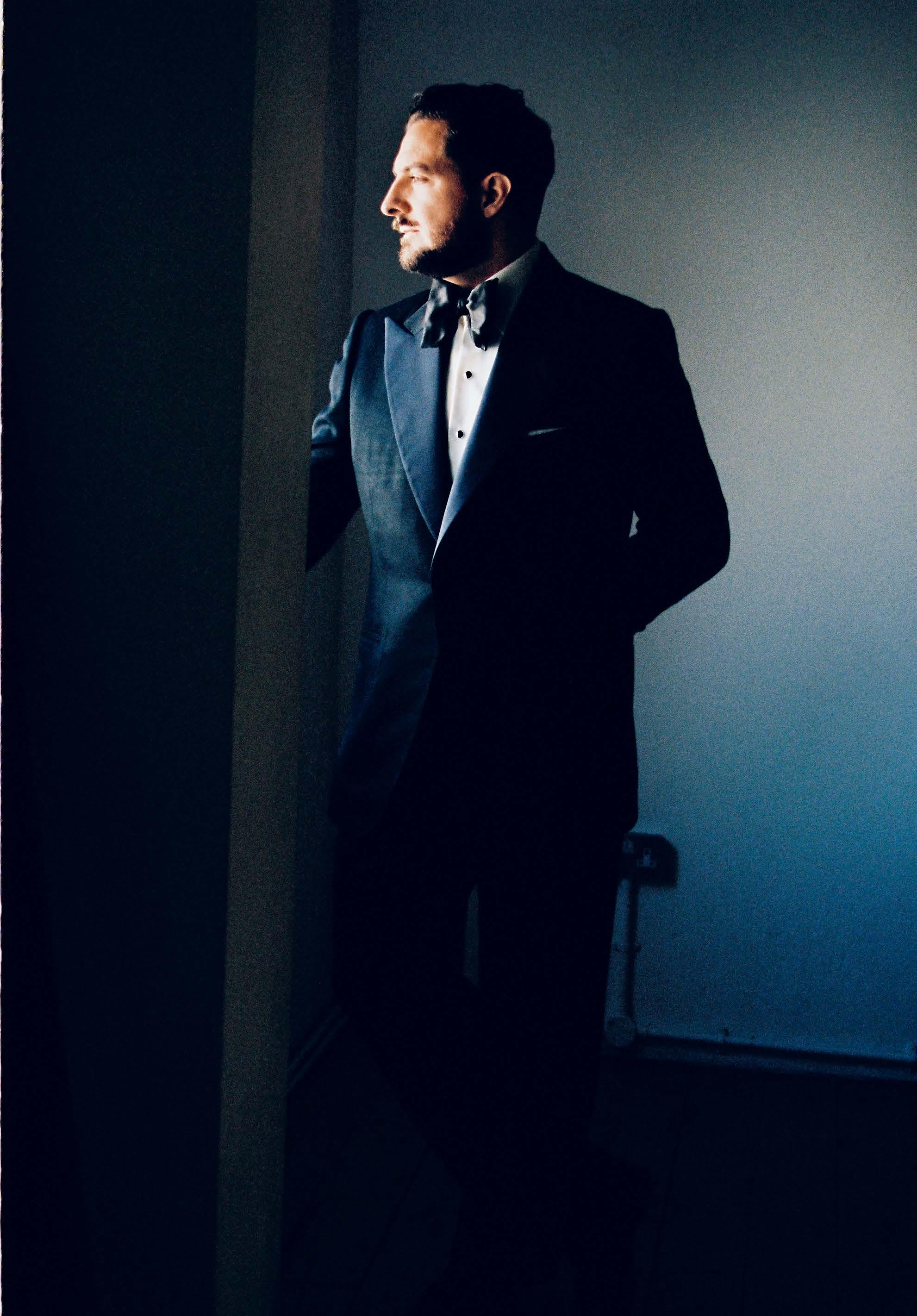
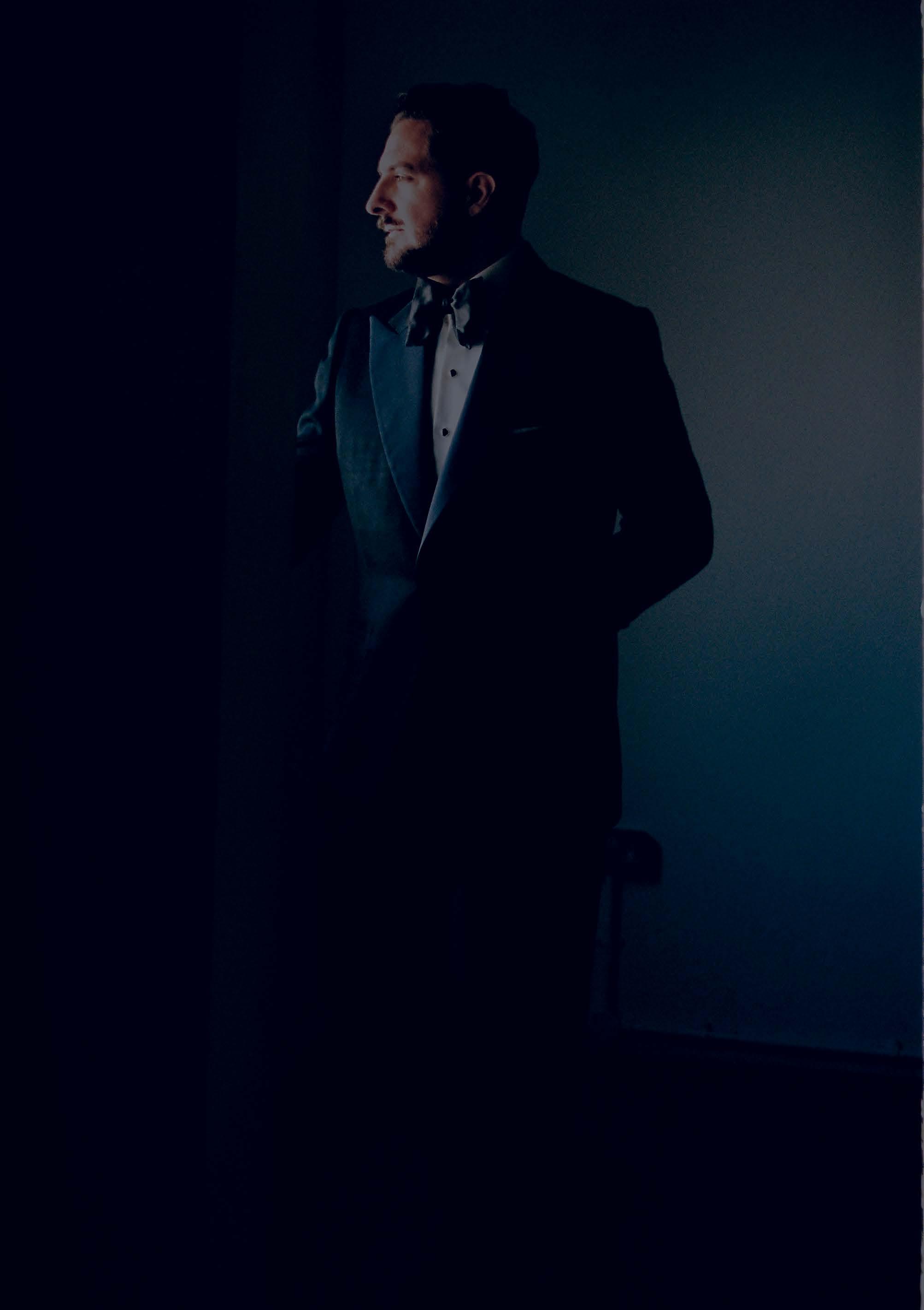
3.3
59 58
In short, it is the remainder that requires ver y careful shepherding ravines aplent y are in store for those who do not yet possess goat-like adroitness at navigating the dangerous mountain passes of black tie. That metaphor well and truly done to death, su ce it to intone that the classics form the foundation of the black-tie wardrobe, and in such garb you’ll never feel underdressed or out of place at a formal evening function; but there do remain certain other details to consider in the matter of shirts, shoes, socks, cu inks, and, of course, the bow tie itself — and as an old friend once told me, ‘Caress the detail, the divine detail.’
Now that we’ve warmed to our theme, the time has come to turn to the real purpose of this book, which is to inspire a gentle very gentle! modernization of eveningwear so you can individualize your outfit, while not upsetting the apple cart of good taste and casting the baubles into the abyss. I have ever y intention of furnishing you with the know-how to look as svelte and morally ambiguous as Humphrey Bogart in a white dinner jacket or as sultr y as Tom Ford in a velvet number, while never feeling awkward or looking out of place.
The following chapters take you through various ways to sartorially spice things up as vigorously as you can while keeping your clothes on and retaining a connection with the past, and remaining true to the greatest dress code known to man.

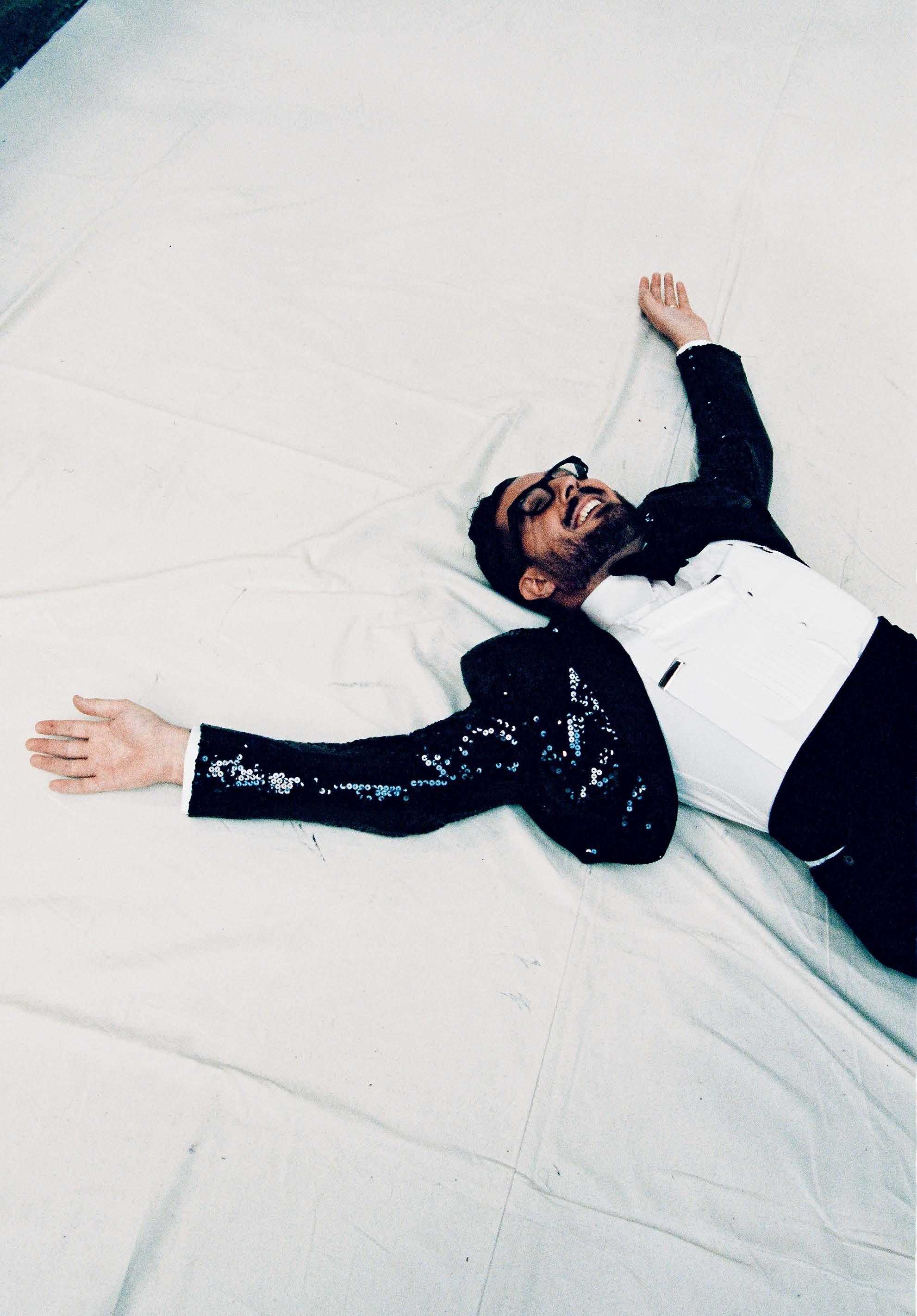
3.8 3.8 78 79
4.1 JACKET OPTIONS
When it comes to your choice of black-tie jacket, straying away from the classics may, to the purist or novitiate alike, represent a clear and present danger, just as deviating from any time-honed and -honoured stricture gives the most daring of men a smidgen of pause. But our moment of pause came a whole chapter ago! Having passed su cient time in contemplation of the classics, we are now ready to plunge headlong into the murk y but exciting depths of alternate jackets.
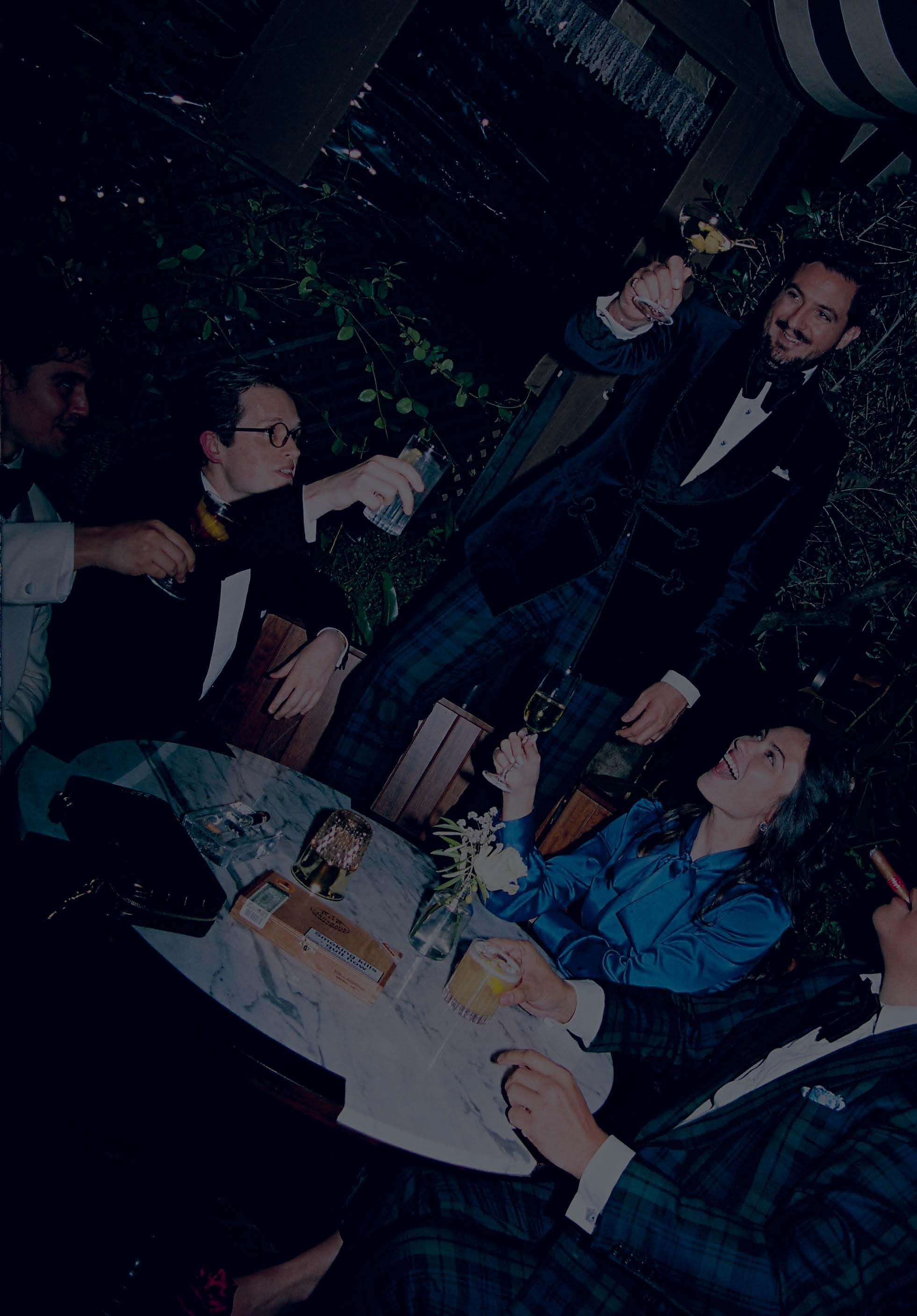
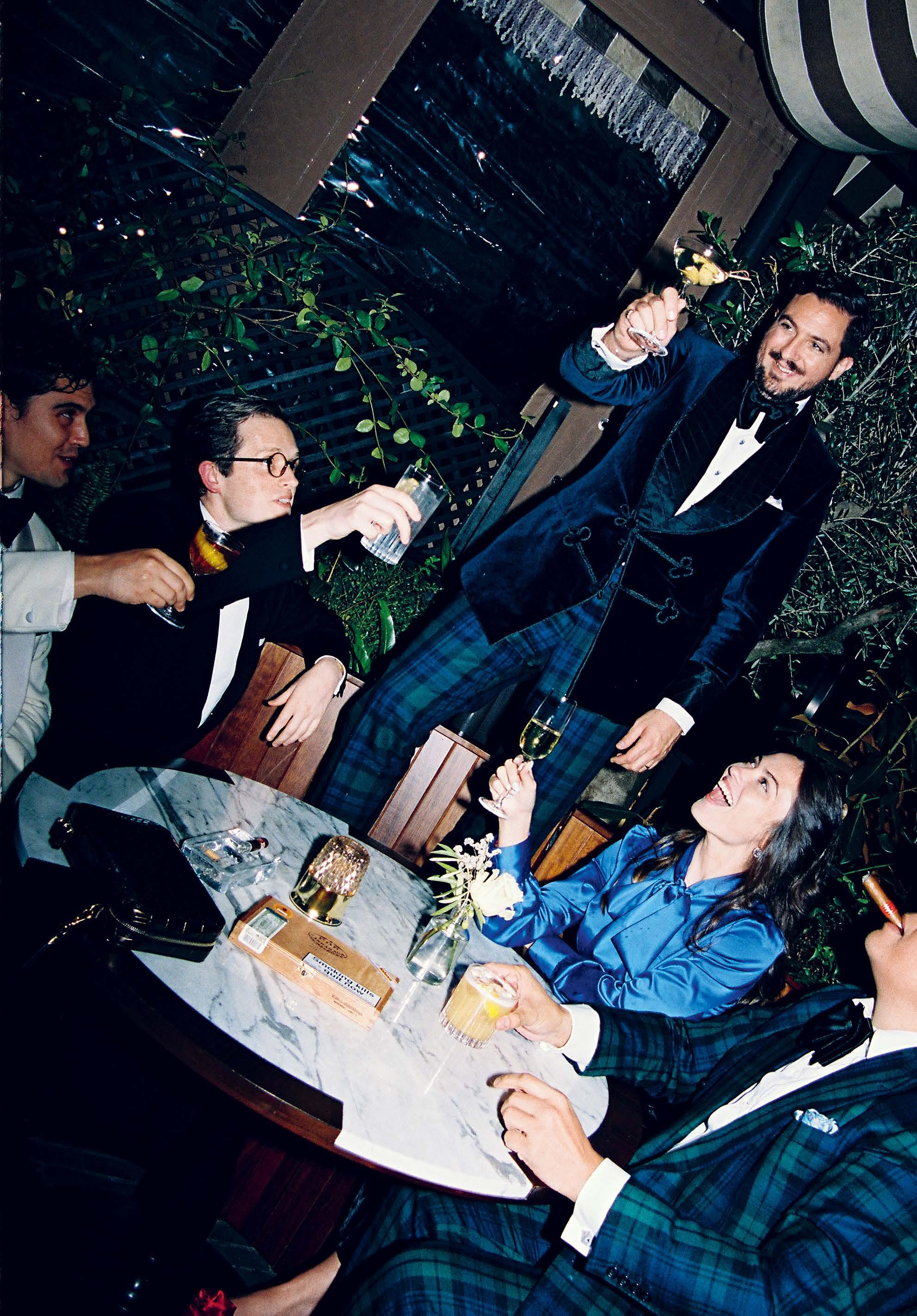
85 84
Alternative facings
Facings with patterns or st yling such as moiré will attract attention to your lapels, perhaps at the expense of your face. They ’re only really suitable if you’re intentionally seeking to stand out from the crowd, so don’t expect gushing praise from Colonel Blimp. If you’re likely to be traipsing down the red carpet, go for it, but I don’t know many people in that line. As ever, be war y of the brittle line between interesting and na .
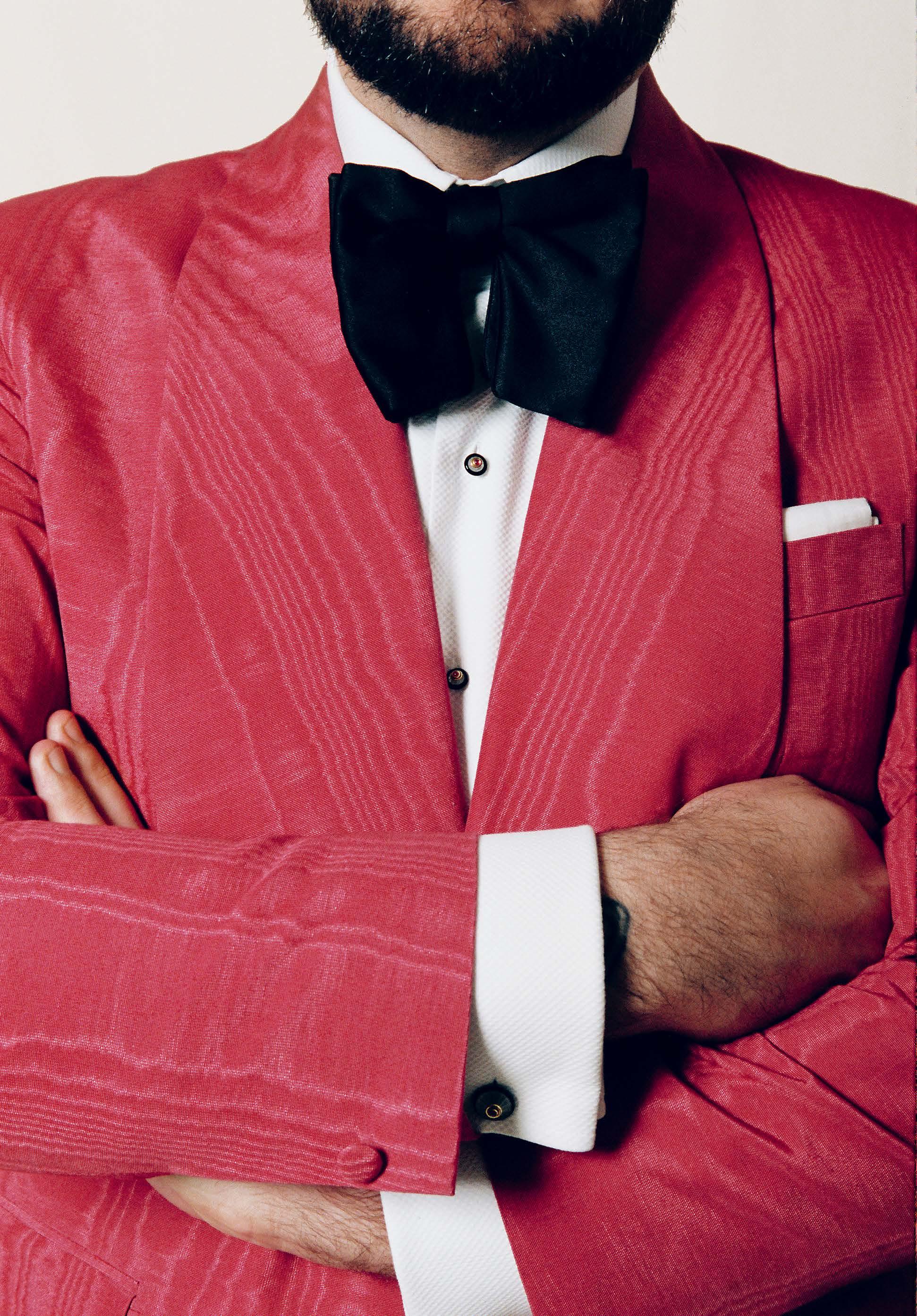
4.3 4.3 114 115
White marcella front White pleated front
Sometimes called a piqué shirt front, the marcella is one of the two traditional choices. The body of the shirt is usually a soft, breathable poplin, with the collar, cu s, and shirt front made of marcella cotton. The shirt front can be starched to pu up even more sti ness, which will last all evening and create an incredibly, almost artificially clean look. Be aware that today heav y use of starch is a somewhat vintage a air, and that marcella is set o best with studs, as opposed to buttons.
The second of the traditional options, the pleated front doesn’t just elevate your appearance above day wear, it wrenches it upwards and hangs it on a butcher’s spike for all to gawp and gasp. The body of the shirt is also usually made of poplin, with the shirt front being of a pleated fabric. The vertical lines of the pleats imbue a sense of lengthened height, and work together with the rest of the ensemble to the same e ect. A pleated-front shirt is a sophisticated option for black tie today, adding as it does a smidgen of texture and interest. It goes ver y well with either studs or white mother-of-pearl buttons.

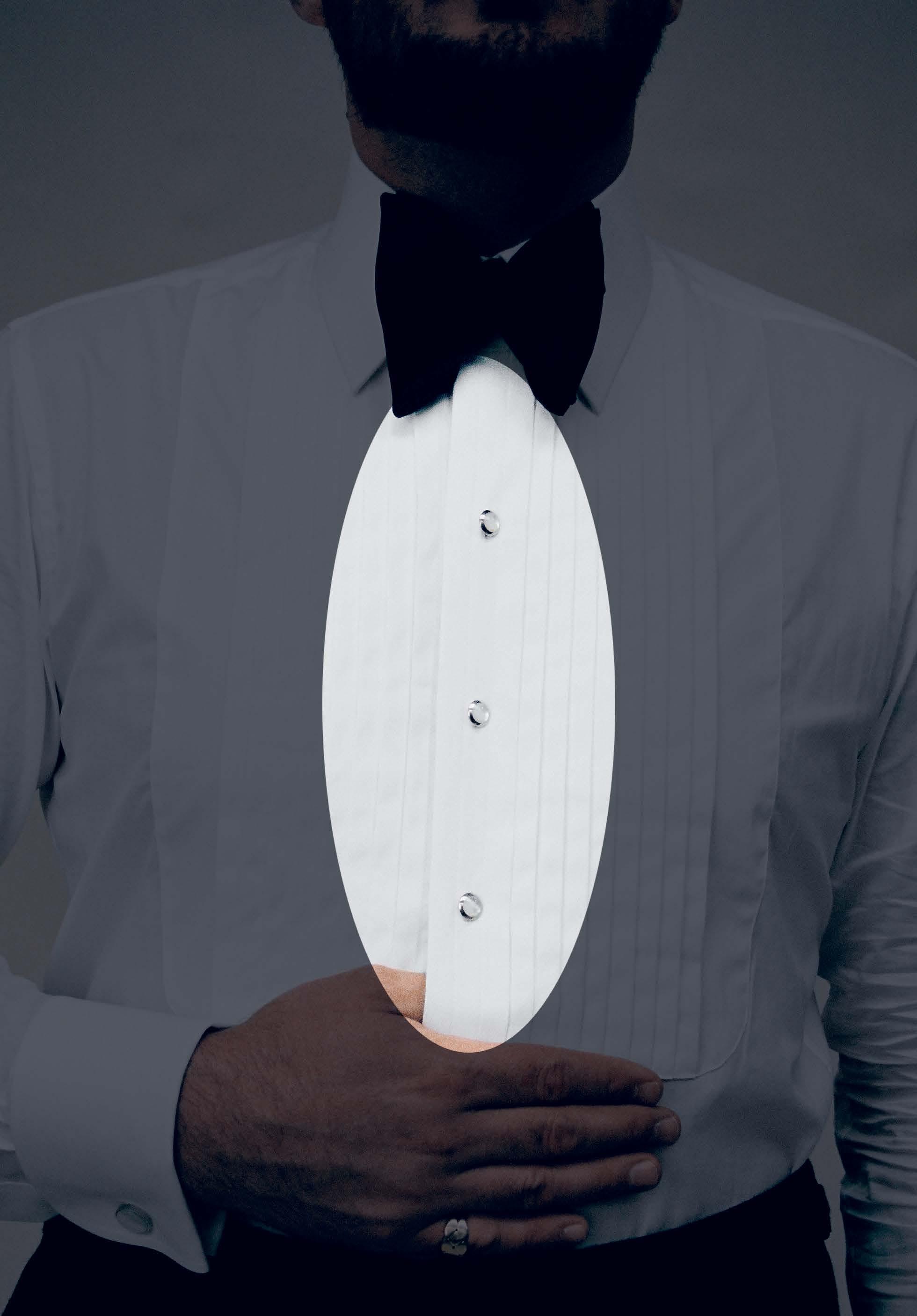
7.1 7.1 164 165
A single-end bow tie is for the man who wants to get the whole thing done as unfussily as possible because when one doesn’t have to tie both sides, one can more easily achieve a symmetrical bow and a tighter, neater knot. Some might argue (by which I mean, I do argue) that the asymmetr y that results from self-t ying a bow tie is one of the most crucial parts of the whole look. Although a single-end bow tie will naturally lack this rakishness, it may well provoke interest, being a relic of the ’20s and ’30s, and it is significantly easier to tie. Just ask my friend Luke, for whom it took only about an hour to figure out, as opposed to his usual tear-stained two or three.
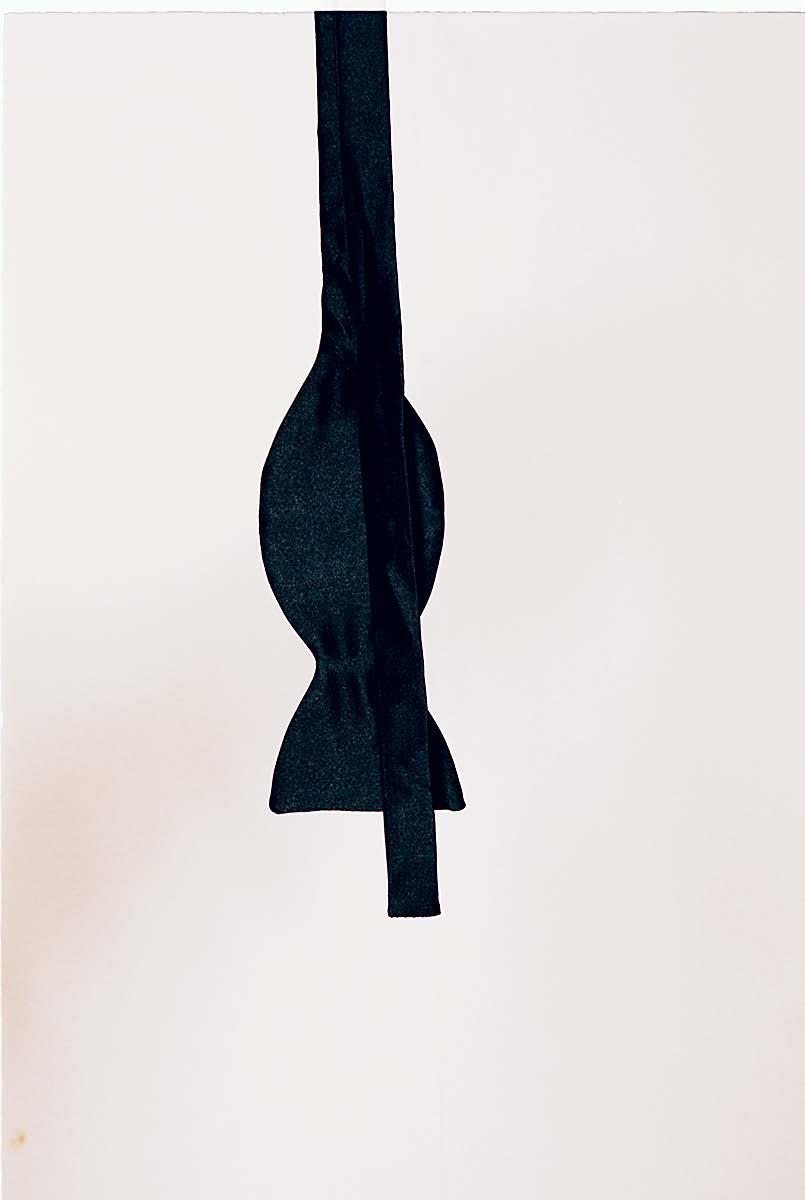
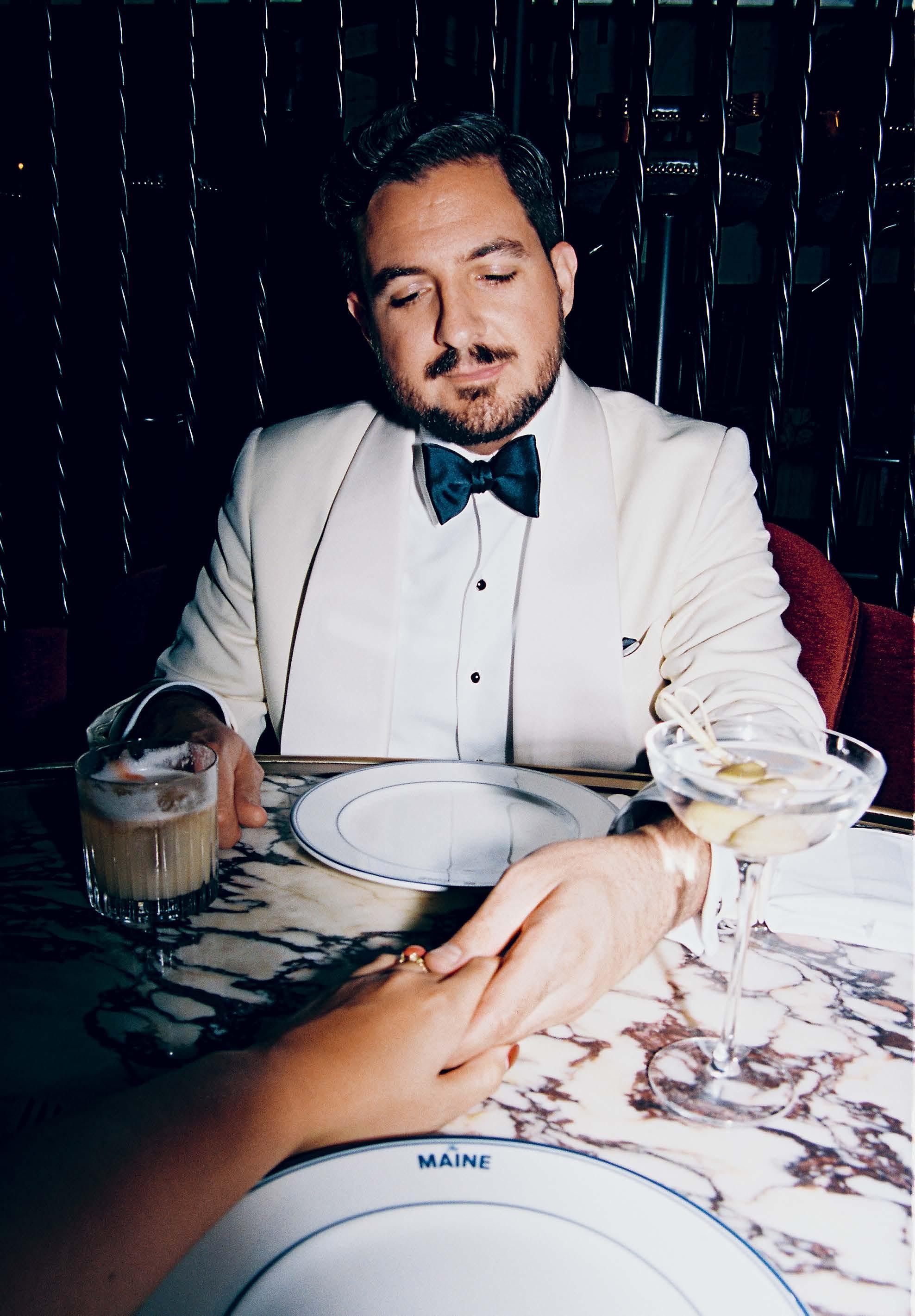
Single-end
8.4 8.4 228 229
